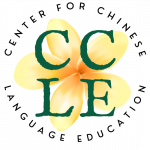Sociolinguistics Seminar Rediscovers Honolulu's Chinatown
CCLE Staff
February 26, 2025

On February 26 of this year, Professor Song Jiang’s Sociolinguistics Seminar course had the pleasure of hosting a lecture by Gary Coover, a foremost expert of the history of Honolulu’s Chinatown. The lecture, entitled “Searching for Chinatown,” provided a comprehensive account on the ethnic enclave.
Coover’s professional background allows him to convey details about various buildings and streets that comprise Honolulu’s Chinatown in a way that others who conduct similar historical studies are unlikely to. A civil engineer by training, Gary Coover ran a multistate engineering consulting firm prior to becoming a historian. This experience has given Coover greater insight into understanding the structures, streets and infrastructure that comprise Chinatown vis-à-vis other historians.

The lecture began by delving into the difficulties faced by those seeking to understand the history of Honolulu’s Chinese community. Perhaps the greatest difficulty was the lack of standardization with respect to recorded Chinese names. Coover noted that recent arrivals often had their names butchered by those recording them. Romanization for these names was also non-standardized, so English-language sources would often see the same surname written in multiple different spellings. This difficulty was compounded by the fact that Chinese name order conventions could result in a Chinese surname being recognized as part of a person’s given name, hence the Ching Sing Wo being mislabeled as “CS Wo,” despite “Wo” not being a Chinese surname. Overall, such a dynamic led to difficulty for Coover and others in distinguishing which arrivals owned or worked in which properties.
Coover also provided a compelling account of the changing of the cityscape in Honolulu’s Chinatown due to his collection of a treasure trove of photographs of the area. The photographs were so numerous and so comprehensive that they provided a level of coverage almost comparable with that of Google Street View. This allowed Coover to compare the buildings that line Honolulu’s Chinatown today with those of the past, finding overall that many of the buildings remain albeit in altered form.
Coover provided an excellent account of the historical changes that Chinatown has seen. After its heyday as a tourist haven, Chinatown began to take on a more risqué character. Burlesque establishments lined its streets, especially Hotel Street, as exemplified by the “Club Hubba Hubba,” which has since faded into history though its sign has not. Cover noted that Honolulu Chinatown’s erstwhile reputation for smut has also since gone away as the 20th century ended.
At the conclusion of the lecture, Coover provided numerous resources to help those interested in researching the ethnolinguistic landscape of Honolulu’s Chinatown. These resources range from government documents to photocopies of Chinese language newspapers, the latter of which are of particular interest as they coincide with a period that Chinese revolutionary Sun Yat-sen was active in Honolulu’s Chinatown.
From city planning documents, to a plethora of photographs, the lecture provided what is perhaps the most comprehensive account of Honolulu’s Chinatown available. Prof. Jiang, his students, and all others in attendance were delighted to host Gary Coover.
